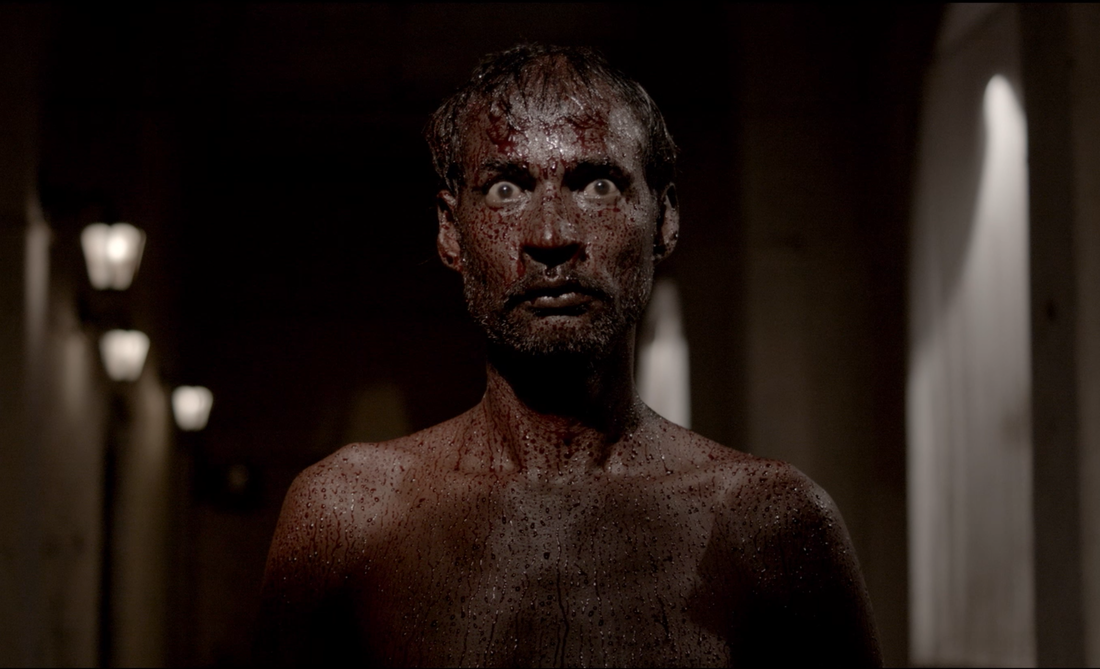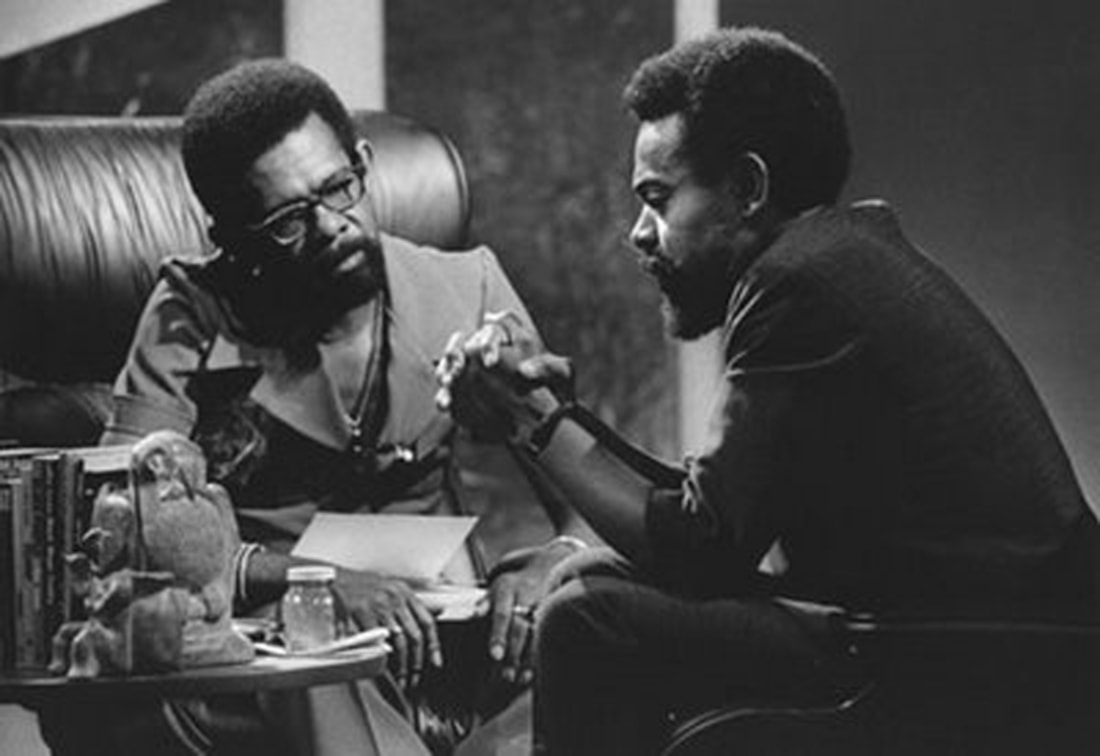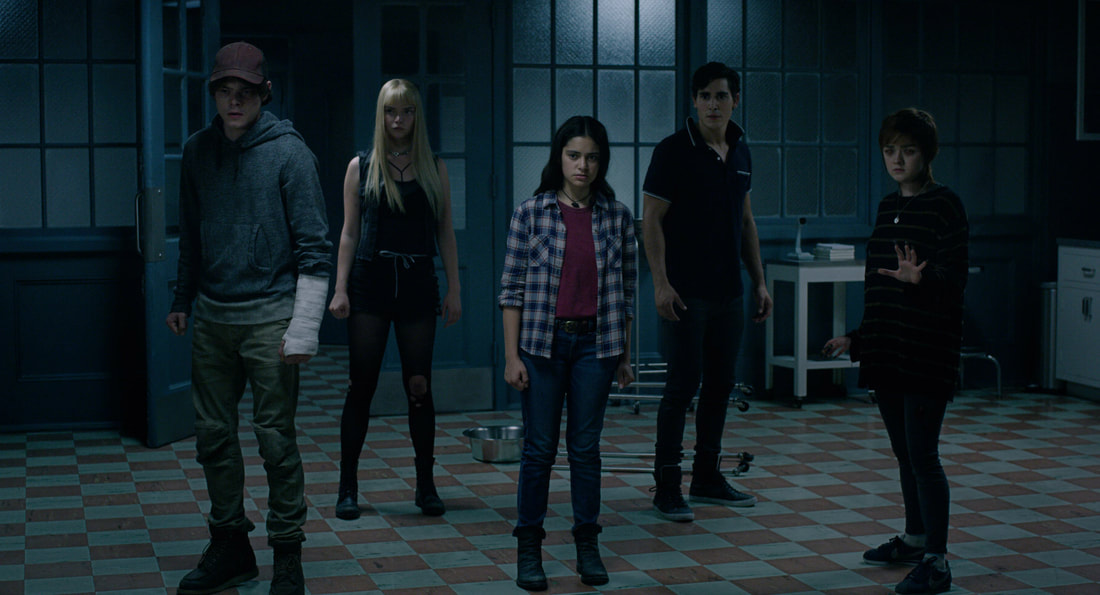|
Review by Sean Boelman
Cult-favorite filmmaker Lloyd Kaufman and his Troma Studios have always been edgy, so it should be no surprise to those familiar with his work that his newest movie, #ShakespearesShitstorm, is as incendiary as ever. Taking aim directly at the modern youth, it does sometimes come across as a bit rant-like in nature, but it has plenty enough gross-out humor to satisfy Troma fans.
A Troma-tized interpretation of William Shakespeare’s classic play The Tempest, the film tells the story of a brilliant scientist and inventor who seeks revenge against those who ruined his career. And yet, despite all of the sex and drugs (and whale excrement) that Kaufman and co. added to the equation, this surprisingly sticks true to many of the Bard’s original themes of betrayal and hypocrisy. Of course, Kaufman transposes these issues from the seventeenth century to the modern day. Instead of calling out the hypocrisy of the King’s court, it is Big Pharma upon whom Kaufman has set his target. And while there is still familial drama, cancel culture is the villain who led to Prospero’s doom. (Recent events involving Troma’s YouTube channel shine an interesting light on Kaufman’s portrayal of himself as the martyr who sacrifices himself to enlighten the world.) As always, this movie spares no one when it comes to its comedy. Kaufman simply isn’t afraid of pissing anyone off, and some of the jokes here do come at the expense of others. Then there is also the overt and crude level of sexuality about the film. Troma’s movies appeal to a particular taste, and if they haven’t appealed in the past, chances are this one won’t either.
One of the most impressive things about this adaptation is the way in which it lives up to the essence of the original characters while turning them into something that is unmistakably a Troma creation. Kaufman really brings the Prospero character to life in a brilliant way, especially when it comes to the dynamic between him and the King.
As expected, a lot of the acting here is over-the-top in a B-movie way, but it fits. Standouts include Abraham Sparrow as the tyrannous head of the pharmaceutical company (and the only actor who is giving a more serious, almost Shakespearian performance) and the very funny Kate McGarrigle as Prospero’s lonely and lovesick daughter. Obviously, one can’t come into a Troma movie expecting Hollywood-level special effects, but for what the filmmakers had at their disposal, it actually looks pretty awesome (and very fun). The practical effects that were used to create the eponymous flurry of poo are certainly among the most memorable parts of the film. #ShakespearesShitstorm delivers exactly what fans would want from the new Troma venture: an hour and a half of absurdity and crudeness. What’s more impressive is that, over thirty-five years after his big break, Lloyd Kaufman still has plenty to say, and he isn’t going to let anyone stop him from saying it. #ShakespearesShitstorm screened as a part of the virtual edition of the 2020 Fantasia Film Festival, which runs August 20-September 2. Rating: 3.5/5
0 Comments
Review by Sean Boelman
Taking its inspiration from rituals of the Hindu religion, Sidharth Srinivasan’s art horror Kriya, his first narrative feature in ten years, is a disturbing and fascinating experience. Blending elements of psychological and supernatural horror, this film creeps under your skin in unexpected ways before taking hold in one hell of a climax.
The movie follows a young DJ who is picked up by an attractive woman and taken to her home, soon finding himself in over his head when he discovers that her father is dying and he must become a part of the last rites. This is certainly a prime example of art that is better understood with a knowledge and understanding of its cultural context, and some post-watch research will certainly lead to a greater appreciation of its intricacies. Some audiences are likely going to have a hard time getting into the first half of the film, which is understandable. A lot of information is thrown at the audience rather quickly, and it’s all pretty essential for understanding what goes down in the finale, which is, without a doubt, the movie’s main success. Srinivasan’s script is perhaps most effective as a deconstruction of an extremely patriarchal society. The more melodrama-oriented portion of the script has a lot more development than the horror side, and as such, it lends itself to a greater connection. The examination of grief here is nothing new, but the way in which Srinivasan uses it to build upon his more interesting things is excellent.
The film also has some really intriguing character development. A shroud of ambiguity surrounds everyone except for the protagonist, who is even a bit mysterious himself. For most of the movie, the audience is kept in the dark as a means of forcing them to question what is going on, and it’s really unsettling.
Noble Luke gives a very compelling performance, really capturing the everyman feel that is necessary for the audience to identify with the character. However, it is the supporting cast — the peculiar family pulling the strings — that stands out. Navjot Randhawa’s performance is quite haunting, and Kanak Bhardwaj is pretty excellent too. That said, the single best aspect of this film is its imagery. The movie starts with a hypnotic dance sequence with flashing lights, and while that may aggravate some, it sets the precedent for the surreal and trance-like nature of the rest of the film. And when the ritualistic elements fully come into play, Srinivasan’s eerie approach is completely satisfying. Kriya is a culturally-rich horror movie, and one that will likely perplex a lot of the genre’s fans. Sidharth Srinivasan’s style and plotting is deliberate, causing a sense of unease, but it may be a bit too much of a slow burn for some tastes. Kriya screened as a part of the virtual edition of the 2020 Fantasia Film Festival, which runs August 20-September 2. An encore screening (geoblocked to Canada) occurs on August 29 at 11:15pm. Rating: 3.5/5
Review by Sean Boelman
Herbert Sauper’s film Epicentro is without a doubt one of the most wonderfully abstract documentaries that audiences will get the pleasure to see this year. Exploring how cinema can be used as a tool in various circumstances, this offers what is probably the scariest outlook there could be on the future of the medium.
The documentary takes a look at Cuba with a specific focus on how cinema and film are used as a means of creating a particular image of the nation within and outside of its country. With how secretive Cuba was towards journalists and filmmakers for such a long time, it’s interesting to see something come out that is so upfront about some of the country’s practices. Of course, Sauper isn’t critical only of Cuba, but any government who uses the media as a way of blinding its people, which is happening more and more as of late, even in countries with a supposedly free press. While propaganda has been around since before the beginning of cinema, the fact that it still exists in such a potentially harmful manner is disheartening. Yet on the opposite side of the coin, film can be used as a method of providing information, and some of the more interesting moments of the documentary explore the failures of bringing that available information to the people. Arguably the issue is not the availability of said information, but rather, the access to it.
That said, perhaps the most intriguing idea that Sauper brings to the table is the relative nature of utopia. This documentary questions what actually makes something a “utopia”. Sauper purports that a utopia is not defined in a universal sense, but rather, in the eyes of who is defining it. It’s an interesting take on Cuban-American relations that hasn’t really been done before.
The documentary is definitely very poetic in nature, Sauper taking a very unorthodox narrative approach. While there are clear narrative threads, Sauper arranges these threads in an interesting way. It’s clear that there are a lot of ideas floating around in his head, and while this structure may not be everyone’s cup of tea, it’s fascinating to dissect. If Sauper does make one significant mistake, it is that he doesn’t let the audience get particularly close to his subjects. The documentary would have done well to really dive into the lives of these people who have effectively been brainwashed in a truly terrifying manner, as this could have made the material hit harder. Epicentro is an amazing documentary in many ways. Although it could have used more of an emotional connection to its subjects, it’s still a thought-provoking and impactful story about the potential and dangers of art. Epicentro is now streaming online in partnership with indie theaters. A list of participating locations can be found here. Rating: 4.5/5
Review by Sean Boelman
Everybody knows the story of iconic African-American talk show hosts like Oprah Winfrey and Arsenio Hall, but the original pioneer, Ellis Haizlip, is too often forgotten. The documentary Mr. Soul!, directed by Haizlip’s niece Melissa Haizlip, seeks to remedy that absence in the history book by bringing light to her uncle’s legendary contributions.
The film explores the run of the African-American-led variety show Soul! and how it and its host Haizlip were leaders in supporting Black voices in the arts. The history of representation in the media is absolutely fascinating, because it has direct ties to other social issues of the time in which said media is created, and the story of Soul! is no different. What makes Haizlip such a revolutionary figure is the way in which he supported voices in the industry which may not have otherwise been discovered were it not for his show. While programs like American Bandstand brought new talent to the world, the opportunities for people of color remained scarce until shows like Soul! came along. By the time the credits roll, viewers will undeniably have a great deal of respect for Haizlip and the influence he had on the television industry. Over the course of the film, we get to hear from people who worked with him, including some of the talent who he helped discover. And every bit of this adulation feels completely earned.
For those who have a deeper interest in media politics, this film offers a surprisingly deep introduction to the role that race relations played in early television, having impacts that can still be felt today. Obviously, there is a lot more to the story than could be contained in a single feature-length documentary, but this is an excellent starting point for the conversation.
This is also a very entertaining documentary. Even though it is a rather straightforward biography, the personal lens which the filmmaker brings to the table is compelling. There’s a lot of history involved, and by placing this story within its greater context, she is able to make the importance of this story evident. The film makes use of a lot of archive footage, in addition to the aforementioned interviews, and it’s a really satisfying method. It’s obviously a treat to see actual performance footage from throughout the Soul! run because of the distinctive variety of voices which Haizlip curated to be a part of his creation. Mr. Soul! is an absolutely phenomenal documentary because of its interesting story and some great execution by the filmmakers. This addresses issues of representation in a way that is both palatable and substantial enough to work as an integral piece of the discussion. Mr. Soul! is now streaming online in partnership with indie theaters. A list of participating locations can be found here. Rating: 4.5/5
Review by Sean Boelman
What is so unique about vinyl lovers is that if you ask a hundred different people, they could each come back with a different reason justifying their love for the medium. Christopher Boone and Kevin Smokler’s documentary Vinyl Nation pays homage to the community that has sprung up around the appreciation of analog music listening, and it’s a wholesome little movie.
The film is essentially a “state of the union address” for the eponymous fandom, offering a glimpse into the remaining collectors, vendors, and manufacturers in the record industry. And while that is understandably a lot of ground to cover in just one documentary, there have been more specialized films to come out that offer a more in-depth look at any one part of the business, so this is a refreshing survey. At a nice ninety minutes, the film is short and sweet, and because of the journalistic approach the filmmakers take, it’s a pretty breezy watch. As expected, the film cashes in on a lot of nostalgia, but because of the resurgence in interest that vinyl has had from the younger generation, there’s another aspect to the film as well. What is so magical about the art of music is the way in which it unites people, and Boone and Smokler really focus on that aspect of the vinyl community. Music lovers from all ages and walks of life can come together and put aside their differences to discuss and admire this tangible form of an otherwise intangible art. It’s pretty mind-blowing to think about it in that way.
As the title implies, this film is about the global community of record fans, and the film features a diverse group of people talking about their passion. From amateur collectors to musicians who have their own extensive personal libraries, the film may not spin too much time with any one individual, but does an excellent job of exploring the greater scene.
The only real disappointment about the film is that the soundtrack isn’t more memorable. Of course, given that this is an independent documentary, a lot of this likely boils down to the fact that song licensing is expensive and it simply wasn’t within the budget to use higher-profile music. But it’s hard to communicate the appeal of the sound of vinyl without a sound to demonstrate. That said, the film is quite strong visually. There are a lot of things working in the film’s favor, like quick and stylish editing and plenty of inspired visuals to use as inspiration. Some of the charm of vinyl is the album artwork, and there are some pretty extensive discussions of some iconic and undersung examples. Vinyl Nation is sure to be a fun documentary for anyone who loves browsing through the record store. And although it isn’t the deepest or most profound documentary in the topic, it accurately captures not only who makes up this community, but why it formed in the first place. Vinyl Nation is now screening online in partnership with indie theaters (and more). A list of participating locations can be found here. Rating: 3.5/5
Review by Sean Boelman
Daria Price’s documentary Driven to Abstraction has an insane story that should lend itself quite well to a cinematic retelling. And yet, somewhere along the line, something is lost, making this a nearly insufferable and dull film, deconstructing the art world in a level of detail that would be of little interest to none but the most passionate art aficionado.
The movie tells the story of the tragic downfall of one of New York City’s once most prestigious galleries because of an art hoax that rocked the industry. On paper, this sounds like this should be a fascinating combination of a heist and a fall from grace, but in execution, it’s really nothing more than an analysis of the flaws of the art market. Viewers will come into this story hooked by the premise wondering how something like this could happen. How could one of the most respected galleries in the world be involved in a scam involving fake Jackson Pollock paintings? How could someone ever think that they would get away with mimicking one of the most iconic abstract artists of all time? Ultimately, viewers will be left with far more questions than they have answers. Instead, the film attempts to offer an ethical discussion of the responsibilities of an art dealer. And quite frankly, nobody cares. Although the question of who is to blame for this situation is important knowledge for future reference within the industry, it simply isn’t compelling enough of an investigation to make for an entertaining documentary.
The movie really struggles in trying to give the audience someone to identify with as the protagonist. Are we supposed to feel sympathy for this art dealer for losing her career because she was duped? Or should we admire the con-artists for nearly getting away with these forgeries? Obviously, a lot of sympathy lies with those who actually lost money purchasing these paintings, but their perspective is largely ignored.
It seems that the real subject of the film is none of these. The real subject of this movie could be taken as the art industry itself. Price obviously wants this to be an exposé about the harmful practices of dealers brought about by a toxic industry, but there’s not enough discussion of this issue from the perspective of those who it really affects: the artists. And on top of the film’s narrative issues, it simply doesn’t look very good. And while interviews that are plainly shot and dull uses of archive footage can usually be forgiven, that is not the case when the movie itself explores a visual medium. The only part of this film that does impress is its score, which is actually pretty nice, but mixed into the final cut in a frustrating way. Driven to Abstraction is a boring documentary that has no right to be as uninteresting as it is. One day, this will make a great narrative feature with some A-list stars and some flashy action sequences, but today, this documentary is one to skip. Driven to Abstraction is now streaming online in partnership with indie theaters. A list of participating locations can be found here. Rating: 1/5
Review by Sarah Williams
Yet another “never before seen footage” type doc, Cured does its job fairly well. It is the story of how gay activists went toe-to-toe with the APA to get homosexuality removed from the DSM listing as a mental illness, and its yet another gap filled in LGBTQ history (and the ludicrous claim that the removal of the listing 'cured' every documented homosexual). Newspaper clippings, archival footage, and narration blend together to give a clear picture of this law, and its removal, an end result that doesn’t leave much more than the true story itself.
Gay history is often viewed as dominating relationships between aristocratic men and peasants in Ancient Greece and Rome, then Stonewall, the the United States Marriage Equality Act in 2015. It’s a Euro-centric view of LGBTQ history, skipping around to just the parts that are harder to erase. Even within the US, so many smaller legal victories towards acceptance are overshadowed, and it's great to see this important act of removing the dehumanization of love documented the same way this more commonly discussed history is. It’s hard to believe that the heads of the scientific nation would go out of their way to list homosexuality as a mental illness, but this is conveniently scrubbed from history, always discussed as pure phobia, and not societal classification that this is defective. Of course, unless outspoken, lesbians were instead ignored or written off as close friendships, an odd safety. These kind of simple, direct docs may start to blend together, but it is important to note that we now see gay and trans history documented and released the same way other stories of a fight for equality have been. While some of these types of films may come off as merely serviceable nonfiction storytelling in a slate of imaginative fiction at an LGBTQ centered film fest, like Outfest or Frameline, this fits a specific niche. It’s educational content that doesn’t need to be sought out, and is made for more mass appeal in terms of filmmaking sensibilities, as this is something that many will genuinely learn from. 
Kay Lahusen joined other protesters on a picket line in front of Philadelphia’s Independence Hall on July 4, 1969. This protest marked the fifth “Annual Reminder,” a march held yearly on July 4 to remind Americans that LGBTQ citizens were denied basic civil rights. From Cured, directed by Patrick Sammon and Bennett Singer. Photo credit: Nancy Tucker, image courtesy of Lesbian Herstory Archives.
Even though Cured isn’t the most adventurous in terms of filmmaking, it fits into a key sector of cinematic purpose. It’s the sort of film that you’d find on PBS late at night, the way information seeps into your brain when the moon comes up, an after dinner haze where you don’t realize you’ve learned something until it slips out in conversation at a dinner party. It’s great to see this assembled in a manner that normalizes it as a piece of history, the same kind that plays on the TV wheeled into a classroom on a substitute teacher. It’s LGBTQ history 101, but our history is hardly told, and it’s nice to be able to watch something that unpacks it so clearly.
What I do want personally is for these historical documents to focus less on suffering and discrimination, and to see more gay and trans joy when history decided we did not exist. Even though it is shown through the eyes of the family around them, Netflix’s A Secret Love was a step in the right direction, showing the love between an older lesbian couple that had flown under the radar for so long. Of course, seeing the truth is never troubling, but it would be nice if the media a heterosexual audience sees shows more than just our oppression, and for them to see that light was even possible at the height of it. Cured had its world premiere at Outfest 2020. It is currently seeking distribution. Rating: 3/5
Review by Sean Boelman
Based on one of the more obscure works of the Godfather of Manga, Osamu Tezuka, Tezuka’s Barbara is a stylish psychosexual neo-noir, and it’s almost certainly going to catch its viewers off-guard. Bizarre but thought-provoking, there are certainly elements here that don’t work, but plenty enough that do to make it an intriguing watch.
The film follows an author who encounters a mysterious woman on the street and forms a dangerous obsession with her. And while this sounds like a simple premise, the script in reality is anything but. There are layers on top of layers that make things get extremely weird very quickly. And like the protagonist, viewers will be questioning their own sanity by the time the credits roll. Ultimately, the most compelling element of the story is the mystery as to who (or what) the eponymous temptress actually is, and screenwriter Hisako Kurosawa reveals his hand a bit too early. Because of this, the first hour or so is really alluring and hooks the viewer in, only for the final act to drag. Of course, as is the case with most erotic thriller-type films, there is a message here about the dangers of obsession. But what makes this take on the genre so interesting is that it specifically focuses on the idea of a muse and how not only the artist, but their work is affected by this spiraling rabbit hole down which the protagonist falls.
The character development does leave something to be desired. Those who have embarked on a creative endeavor and identify with the protagonist will undoubtedly sympathize with his plight, but general audiences may find him difficult to approach. Although the noir protagonist is traditionally flawed, he’s almost too flawed to get behind.
Perhaps the absolute highlight of the film is Fumi Nikaido’s performance as Barbara. It’s a very complex role, and yet she tackles it with ease. The range that it requires alone is thoroughly impressive and is a big part of what sells the film’s emotion. Her chemistry with co-star Gorô Inagaki is great as well, although Nikaido almost always takes the spotlight. Aesthetically, the film is quite good. The fact that it was directed by Tezuka’s son, Makoto, means that there was a lot of effort put into preserving the vision of the original work. The legendary Christopher Doyle served as cinematographer for the film and gives it an excellent look. Ichiko Hashimoto’s score also does an excellent job of recreating the noir feel. Tezuka’s Barbara is unlikely to be everyone’s cup of tea, but it’s impossible to deny that it is a unique experience. For those willing to try something that pushes the envelope, this could be very interesting. Tezuka’s Barbara screened as a part of the virtual edition of the 2020 Fantasia Film Festival, which runs August 20-September 2. An encore screening (geoblocked to Canada) occurs on August 28 at 5pm. Rating: 3.5/5
Review by Dan Skip Allen
20th Century Fox owned the rights to the X-Men since 2000. Since then, theatergoers have gotten two different incarnations of the X-Men: one led by Patrick Stewart and Ian McKellen respectively, and another headed by James McAvoy and Michael Fassbender. The past twenty years have offered some good X-Men films and some bad. The New Mutants is on the side of the former — maybe even very good. But the thing that should be clear is these aren't your daddy's X-Men.
Danielle "Dani" Moonstar (Blu Hunt) is woken by her father, carrying her out into some nearby woods. Behind them is the sound of a roar, snow falling, and a trail of destruction being left in their wake. Before you know it, she wakes up in a room strapped to a bed. She doesn't know how she got there. Doctor Cecilia Reyes (Alice Braga) comes in and releases her and explains what's going on. She then introduced her to the rest of the patients in her care (Anya Taylor-Joy, Charlie Heaton, Maisie Williams, and Henry Zaga). Josh Boone (to this point best-known for The Fault in Our Stars) is no stranger to teen dramas. This is his first foray into comic book movies, though. With Knate Lee he adapted the popular demon bear storyline from The New Mutants comics, written by Chris Claremont and drawn by Bill Sienkiewicz, for his first shot at these young mutants. This story is widely considered the most popular and acclaimed story of these characters. It was their introduction to Marvel Comics. The movie pretty much adapts the story from the comics to a tee. This story deals with a lot of inner demons that these characters have to deal with, but also how they deal with each other.
Personal demons are a subject that a lot of movies deal with. Because the people watching these films can relate to the demons the characters are dealing with, such as alcoholism or drug abuse. This was the perfect story to adapt first to the first New Mutants movie. Each character in the film has to come to terms with his or her own past and move forward. Not until they do that can they exercise their demons. On a personal level, I can relate to what these kids are going through because I have had to do the same in my life. It wasn't easy! Boone has made a film quite a few people can relate even though it's set in the world of comic books
The New Mutants was delayed three different times since it was made. Even the actors who portrayed the main characters have all aged enough to become adults. They were kids when they started shooting this film. With the whole Disney/Fox merger last year and the COVID-19 pandemic this year put this movie on the back burner at Disney. Finally, the film has arrived in theaters two years after it was supposed to be released in theaters. And The New Mutants was worth the wait. It has a great story with terrific acting all-around and direction from Boone. Along with the script, the visual effects, and score were all first-rate. This film is going to make a lot of people happy because it is really a very good adaptation that pays homage to the source material. The New Mutants is now playing in theaters. Rating: 4/5
Review by Sean Boelman
Twenty-nine years after their Bogus Journey (and thirty-one after their Excellent Adventure), lovable slacker duo Bill & Ted are back, and even though the actors that play them may have aged, their charm remains much the same. Offering plenty of the goofy humor that made the original such a fan-favorite cult classic, Bill & Ted Face the Music will be great both for the generation for whom it triggers nostalgia and the younger generation who will be discovering the dudes for the first time.
For better or worse, the story of this entry is a lot more complex than that of its predecessors because it attempts to juggle multiple storylines at the same time. The main one, picking up on a thread introduced in the original film, features the eponymous pair as they travel through time trying to find the song that will unite the world. Honestly, it’s just great to see Alex Winter and Keanu Reeves back in their roles again, so the story doesn’t matter that much. Surprisingly enough, the more entertaining aspect of the movie follows their daughters (Samara Weaving and Brigette Lundy-Paine) in what is effectively a more musical rehash of the Excellent Adventure. And while the “passing the torch” trope is an often annoying one for the long-delayed sequel to follow, this one does it in a way that’s both very natural and extremely funny. The rest of the film’s subplots work to a varying degree of success. One about the dudes trying to learn the meaning of love ties the whole thing together quite well, whereas one about the daughter of Rufus leaves a lot to be desired. There were obviously a lot of ideas as to how to continue and conclude this story, and some of them are more effective than others.
That said, the movie is very funny, largely because everyone in the cast gives it their all. There are some great one-off jokes, including an opening scene that will have most rolling in laughter, but many of the most riotous moments in the film come from some more subtle recurring gags that seem destined to become memes.
The cast is great as expected. Obviously, Winter and Reeves are having a ball getting to go back to the roles that launched them into stardom. Weaving and Lundy-Paine do great impersonations of the two stars while still making it feel their own. And some highlights in the supporting cast include a hilariously deadpan Anthony Carrigan and an absurd cameo from Kid Cudi. Additionally, the movie looks a lot better than one would expect. With a budget larger than either of the other two films, the filmmakers were able to make better special effects and invest in some more ambitious visual gags. Still, it is able to retain much of the quirky charm that made the first two what they were. Even though the studio doesn’t seem to have a whole lot of faith in it, Bill & Ted Face the Music is pretty excellent. Sometimes the reward is worth the wait, and in this case, fans will surely be satisfied. Bill & Ted Face the Music hits theaters and VOD on August 28. Rating: 4/5 |
Archives
July 2024
Authors
All
|
|
|
disappointment media
Dedicated to unique and diverse perspectives on cinema! |



















